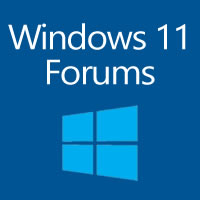Following up on Grizzly's excellent links. Here are the full details.
As pointed out by another member, MS have emphasised that you are under no obligation to install Windows 11.
I have a couple or so of non compatible Laptops. All have installed Windows 11 with the official MS tips below. Because of the inadequacies of my Laptops, the performance has been nothing to excite me. Neither has Windows 11. It appears to be a rehash of Windows 10, with a few things moved around. I have been running Windows 11 for a while on, only one, of my machines.. To date I have not encountered any problems.
But there is a very sensible warning from MS. With subsequent updates, you may run into difficulties if you computer is not up to the compatibility standard. That is your choice. There is also a mention that you may not always get periodic updates - I haven't been able to put this to the test.
fwiw. I used the reg fix as reccomended by MS.
I download the ISO from the link posted below, and installed it on a non bootable USB. From there I ran the Setup.exe. No problems encountered. I selected to keep my data and software - which was also accomplished 100%
You can get Windows 11 officially from here:
Download Windows 11 (microsoft.com)
Warning:
Microsoft recommends against installing Windows 11 on a device that does not meet the
Windows 11 minimum system requirements. If you choose to install Windows 11 on a device that does not meet these requirements, and you
acknowledge and understand the risks, you can create the following registry key values and bypass the check for TPM 2.0 (at least TPM 1.2 is required) and the CPU family and model.
Registry Key: HKEY_LOCAL_MACHINE\SYSTEM\Setup\MoSetup
Name: AllowUpgradesWithUnsupportedTPMOrCPU
Type: REG_DWORD
Value: 1
Note: Serious problems might occur if you modify the registry incorrectly by using Registry Editor or by using another method. These problems might require that you reinstall the operating system. Microsoft cannot guarantee that these problems can be solved. Modify the registry at your own risk.
There are two installation paths available:
Upgrade by launching Setup on the media while running Windows 10. You will have the option to:
a. Perform a
Full Upgrade, which keeps personal files (including drivers), apps, and Windows Settings. This is the default experience and is the one that Installation Assistant uses.
b.
Keep Data Only will keep personal files (including drivers) only, not apps and not Windows Settings.
c.
Clean Install will install Windows 11 and keep nothing from the Windows 10 installation. For more info, see
Give your PC a Fresh Start.
Boot from media to launch Setup. This path is a clean install and will not retain previous files or settings. For more info, see
Give your PC a Fresh Start.
Important: You should verify that your device meets minimum system requirements before you choose to boot from media, because it will allow you to install Windows 11 if you have at least TPM 1.2 (instead of the minimum system requirement of TPM 2.0), and it will not verify that your processor is on the approved CPU list based on family and model of processor.
Create an image install
Use DISM or 3rd party tools to directly apply an existing Windows 11 image to the disk.
Important: An image install of Windows 11 will not check for the following requirements: TPM 2.0 (at least TPM 1.2 is required) and CPU family and model.

